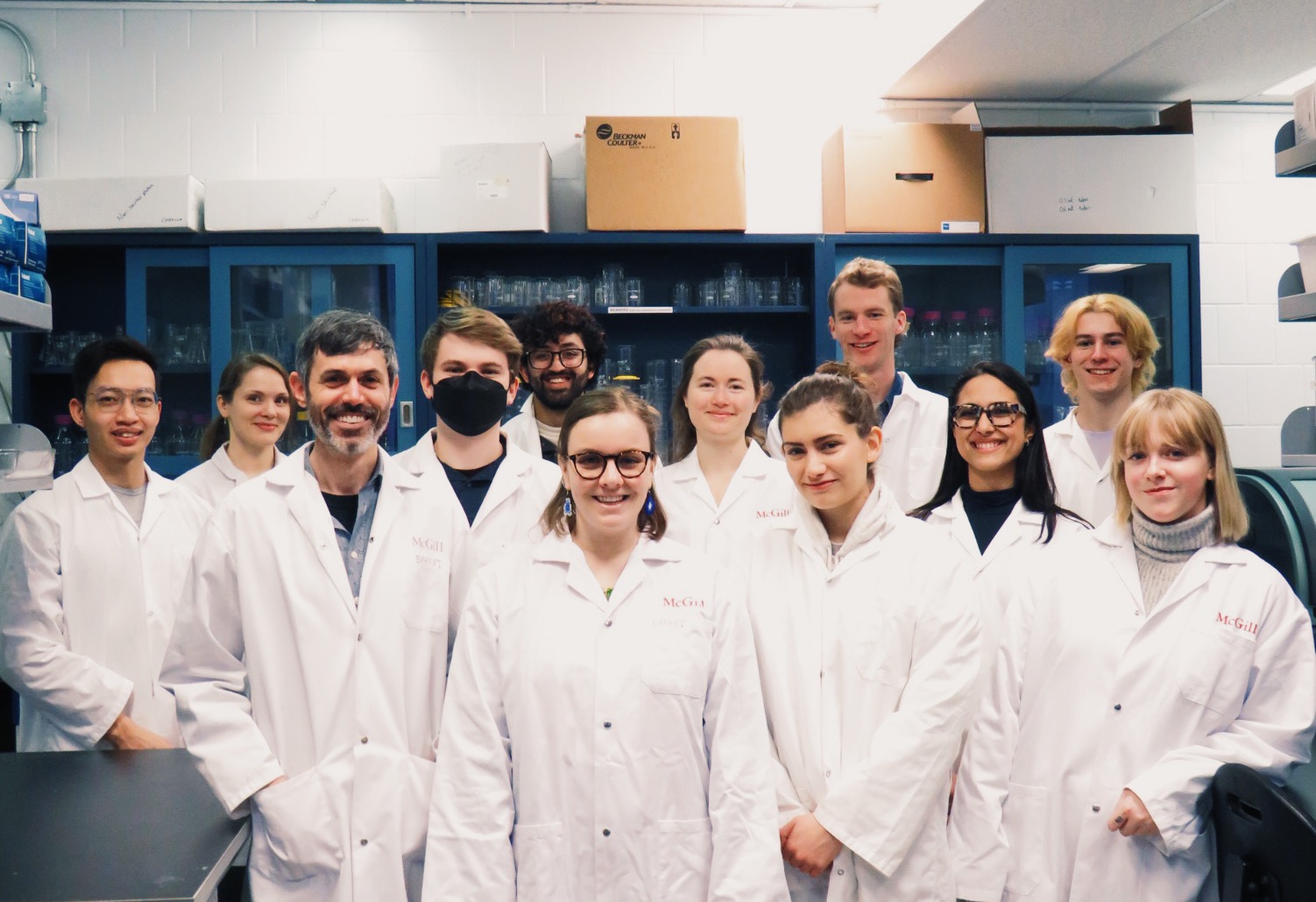
Biological research is crucial to understanding the environmental impacts of the climate crisis, but oftentimes this research involves disrupting the environment it is trying to understand and protect. This is why the Barrett lab decided to focus on how to make their research more sustainable. As part of the Department of Biology and the Redpath Museum, the Barrett lab uses approaches in evolutionary ecology and genomics to understand how animals adapt to rapid changes in their environment, with researchers working in Alaska, Panama, California, the Bahamas, and elsewhere around the world.
Since joining the Barrett lab in 2020, lab manager Åsa Lind has been implementing systems to reduce the environmental impact of their research. While on-campus initiatives like the McGill Green Labs Initiative and the SPF-funded Green Labs Expansion are helping make lab work more sustainable, there has also been a steady rise in researchers who are taking this knowledge out into the field.
In conversation with the Office of Sustainability, Lind shared how this new movement is spreading to remote research areas well beyond the Roddick Gates.
Why did you want to implement more sustainable practices in your lab?
Anyone who has worked in a research lab knows how quickly waste piles up. We use a lot of disposable materials, even in just one lab. And then if you zoom out a bit and think about all the labs in the department, and all the departments at the University, the quantity of waste that we generate gets very big very fast. My role as a lab manager gave me a bit more flexibility to focus on sustainability issues, so I decided to explore what we could do.
Once I started looking into it, I realized how much information was out there and how many resources exist that we weren’t taking advantage of. So, I gave a presentation to the lab, and we decided to go through the My Green Lab Certification process.
What are some habits you’ve incorporated into your fieldwork?
It’s one thing to work on reducing plastic waste and energy use in the lab, but when you go out into the field, everything gets more complicated.
One obvious issue is we need to travel to remote locations, which usually means flying. Unfortunately, this part is unavoidable, but there are ways to reduce the impact. We try to fly direct whenever we can to cut down on the number of planes we take. We also try to carpool and recruit local technicians from surrounding communities rather than fly in more researchers.
Another major challenge of working in the field is managing waste. Many of the places we travel to don’t have proper waste or recycling management systems. We have a “pack in, pack out” philosophy whenever we aren’t sure about the local systems, and one of the first things we do when arriving somewhere new is to try to learn about how waste management works in the area.
Finally, we must recognize that our research is a disturbance to the ecosystem we are interested in understanding and protecting. Being mindful and taking extra time to retrace your steps and minimize your physical impact in fragile habitats is important. It’s not perfect, but these little things can make a difference on how disruptive your presence is.
What challenges have you faced while pushing for sustainable change?
A major challenge has been creating institutional memory. It’s tough to develop sustainable habits that stick because of the high turnover in a lab. It’s the nature of academia. Most students will only be here for two to three years and don’t have a lot of time to ruminate over lab operations. This makes it hard to implement changes and create continuity. Even just making sure everyone in the lab is informed from year to year is tricky.
The plus side is this forces us to get creative and really think about how we communicate with people. If I mention something once in a lab meeting, then I’m relying on everyone to attend the meeting and remember what I said. But if instead I take the time to create signage and attach it to equipment, the information is right where people need it. Meeting people where they are is really important.
What advice do you have for other labs?
Be patient and try to find a balance between sustainability and efficiency, because it’s impossible to be perfect. In research labs, the quality of the science is always the priority, but usually there are different approaches that will give you the same result with varying environmental impacts. I feel like there is a big shift happening right now in science, and I encourage others to join it!
To help your lab implement more sustainable practices, consult the Sustainable Labs Guide and sign your lab up for the International Freezer Challenge. Additionally, any student, staff, or faculty member can apply to the Sustainability Projects Fund to support their lab’s green transition.

Very inspiring article demonstrating how our lab operations can be both pragmatic and value-driven. Excellent work Barrett Lab.